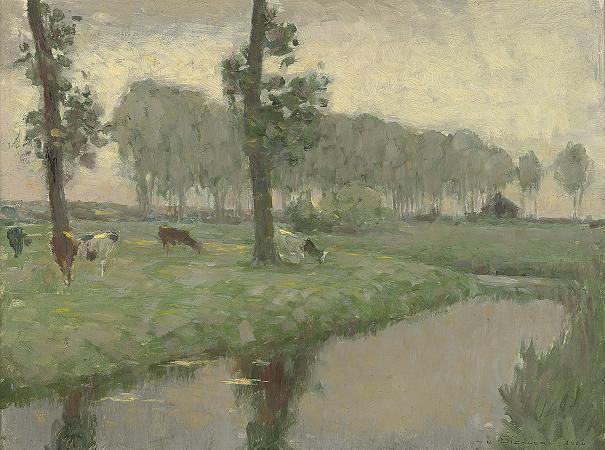Meadow. A meadow is an open habitat, or field, vegetated by grasses, herbs, and other non-woody plants. Trees or shrubs may sparsely populate meadows, as long as these areas maintain an open character. Meadows may be naturally occurring or artificially created from cleared shrub or woodland. They can occur naturally under favourable conditions, but they are often maintained by humans for the production of hay, fodder, or livestock. Meadow habitats, as a group, are characterized as semi-natural grasslands, meaning that they are largely composed of species native to the region, with only limited human intervention. Meadows attract a multitude of wildlife, and support flora and fauna that could not thrive in other habitats. They are ecologically important as they provide areas for animal courtship displays, nesting, food gathering, pollinating insects, and sometimes sheltering, if the vegetation is high enough. There are multiple types of meadows, including agricultural, transitional, and perpetual; each playing a unique and important part of the ecosystem. Like other ecosystems, meadows will experience increased pressure due to climate change, especially as precipitation and weather conditions change. However, grasslands and meadows also have an important climate change mitigation potential as carbon sinks; deep-rooted grasses store a substantial amount of carbon in soil. In agriculture, a meadow is grassland which is not regularly grazed by domestic livestock, but rather allowed to grow unchecked in order to produce hay. Their roots go way back to the Iron Age when appropriate tools for the hay harvest emerged. The ability to produce livestock fodder on meadows had a significant advantage for livestock production, as animals could be kept in enclosures, simplifying the control over breeding. Surpluses in biomass production during the summer could be stored for the winter, preventing damages to forests and grasslands as there was no longer the need for livestock grazing during the winter. Especially in the United Kingdom and Ireland, the term meadow is commonly used in its original sense to mean a hay meadow, signifying grassland mown annually in the summer for making hay. Agricultural meadows are typically lowland or upland fields upon which hay or pasture grasses grow from self-sown or hand-sown seed. Traditional hay meadows were once common in rural Britain, but are now in decline. Ecologist Professor John Rodwell states that over the past century, England and Wales have lost about 97% of their hay meadows. Fewer than 15,000 hectares of lowland meadows remain in the UK and most sites are relatively small and fragmented. 25% of the UK's meadows are found in Worcestershire, with Foster's Green Meadow managed by the Worcestershire Wildlife Trust being a major site. A similar concept to the hay meadow is the pasture, which differs from the meadow in that it is grazed through the summer, rather than being allowed to grow out and periodically be cut for hay. A pasture can also refer to any land used for grazing, and in this wider sense the term refers not only to grass pasture but also to non-grassland habitats such as heathland, moorland and wood pasture. The term, grassland, is used to describe both hay meadows and grass pastures. The specific agricultural practices in relation to the meadow can take on various expressions. As mentioned, this could be hay production or providing food for grazing cattle and livestock but also to give room for orchards or honey production. Meadows are embedded and dependent on a complex web of socio-cultural conditions for their maintenance. Historically, they emerged to increase agricultural efficiency when the necessary tools became available. Today, agricultural practices have shifted and meadows have largely lost their original purpose. Yet, they are appreciated today for their aesthetics and ecological functions. Consequently, the European Union's Common Agricultural Policy subsidizes their management, mostly through grazing. A transitional meadow occurs when a field, pasture, farmland, or other cleared land is no longer cut or grazed and starts to display luxuriant growth, extending to the flowering and self-seeding of its grass and wildflower species. The condition is however only temporary, because the grasses eventually become shaded out when scrub and woody plants become well-established, being the forerunners of the return to a fully wooded state.
more...





